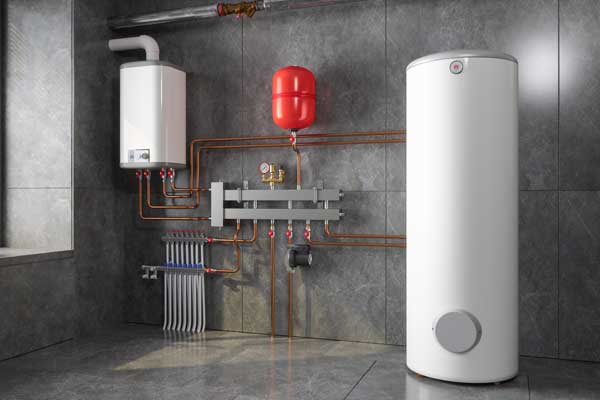Caring for Your Home's Hot Water System: Key Guidelines
Caring for Your Home's Hot Water System: Key Guidelines
Blog Article
We've stumbled on this post relating to How to Maintain a Hot Water Heater in a Few Simple Steps down the page on the net and think it made sense to relate it with you on this site.

Warm water is necessary for everyday comfort, whether it's for a refreshing shower or cleaning recipes. To guarantee your hot water system runs efficiently and lasts much longer, routine upkeep is vital. This post supplies useful tips and understandings on exactly how to keep your home's warm water system to avoid disruptions and pricey fixings.
Intro
Preserving your home's hot water system could seem daunting, but with a couple of easy actions, you can ensure it runs smoothly for several years to find. This overview covers whatever from understanding your warm water system to DIY upkeep suggestions and recognizing when to hire specialist assistance.
Importance of Preserving Your Warm Water System
Routine upkeep not only extends the life expectancy of your warm water system however additionally ensures it runs efficiently. Disregarding maintenance can cause decreased effectiveness, greater energy expenses, and also premature failing of the system.
Signs Your Hot Water System Demands Maintenance
Understanding when your warm water system requires focus can prevent major concerns. Look out for indications such as irregular water temperature level, strange noises from the heating system, or rusty water.
Comprehending Your Warm Water System
Before diving right into maintenance tasks, it's handy to comprehend the standard elements of your warm water system. Generally, this consists of the hot water heater itself, pipes, anode rods, and temperature controls.
Regular Monthly Maintenance Tasks
Routine month-to-month checks can aid catch small problems prior to they rise.
Purging the Water Heater
Purging your hot water heater gets rid of sediment buildup, improving efficiency and lengthening its life.
Checking and Replacing Anode Rods
Anode poles avoid rust inside the storage tank. Inspecting and changing them when worn out is crucial.
Inspecting and Readjusting Temperature Level Setups
Changing the temperature settings makes sure optimal efficiency and security.
DIY Tips for Upkeep
You can do several maintenance jobs on your own to keep your hot water system in top condition.
Checking for Leakages
Regularly inspect pipelines and links for leaks, as these can lead to water damage and greater costs.
Checking Pressure Relief Valves
Testing the pressure relief valve guarantees it operates properly and stops excessive pressure build-up.
Shielding Pipelines
Shielding warm water pipes reduces warmth loss and can conserve energy.
When to Call an Expert
While DIY maintenance is beneficial, some concerns need expert knowledge.
Complicated Issues Requiring Specialist Assistance
Examples consist of major leakages, electric issues, or if your water heater is continually underperforming.
Regular Professional Upkeep Advantages
Professional upkeep can include comprehensive examinations, tune-ups, and making sure compliance with safety and security requirements.
Conclusion
Normal maintenance of your home's warm water system is important for performance, durability, and price savings. By adhering to these tips and understanding when to look for expert aid, you can guarantee a reliable supply of hot water without unanticipated disruptions.
How to Maintain an Instant Hot Water Heater
Before tinkering with your hot water heater, make sure that it’s not powered on. You also have to turn off the main circuit breaker and shut off the main gas line to prevent accidents. Also turn off the water valves connected to your unit to prevent water from flowing into and out of the appliance. 2. When you’re done, you have to detach the purge valves’ caps. These look like the letter “T†and are situated on either side of the water valves. Doing so will release any pressure that has accumulated inside the valves while at the same time avoid hot water from shooting out and burning your skin. 3. When the purge valves’ caps are removed, you have to connect your hosing lines to the valves. Your unit should have come with three hoses but if it didn’t, you can purchase these things from any hardware or home repair shops. You can also get them from retail stores that sell water heating systems. Read the user’s manual and follow it to complete this task properly. When the hosing lines are connected, open the purge port’s valves. 4. You should never use harsh chemical cleaners or solutions when cleaning your unit. Make use of white vinegar instead. It should be undiluted and you’ll probably use about 2 gallons. 5. Now flush your water heater. This task should probably take about 40 minutes. We can’t give you specific directions for this because the procedure is carried out depending on the type, model and brand of your heater. With that being said, refer to the user’s manual. 6. When you’re done draining the unit, you have to turn off the purge port valves again. Remove the hosing lines that you earlier installed on each of the water valves. Put the valve caps (purge port) back in their respective places and be very careful so as not to damage the rubber discs that are found inside these caps. 7. Now that everything’s back in place, check your user’s manual again to find out how to reactivate your water heating system. 8. Once it is working, turn one of your hot water faucets on just to let air pass through the heater’s water supply pipes. Leave the tap on until water flows smoothly out of it. https://www.orrplumbing.com/blog/2014/september/how-to-maintain-an-instant-hot-water-heater/

We hope you enjoyed reading our piece about How to Maintain Your Water Heater & Prolong its Life. Many thanks for finding the time to read our posting. I beg you take the time to promote this page if you enjoyed it. I appreciate reading our article about Water Heater Maintenance Tips You Can't Afford to Forget.
Call Today Report this page